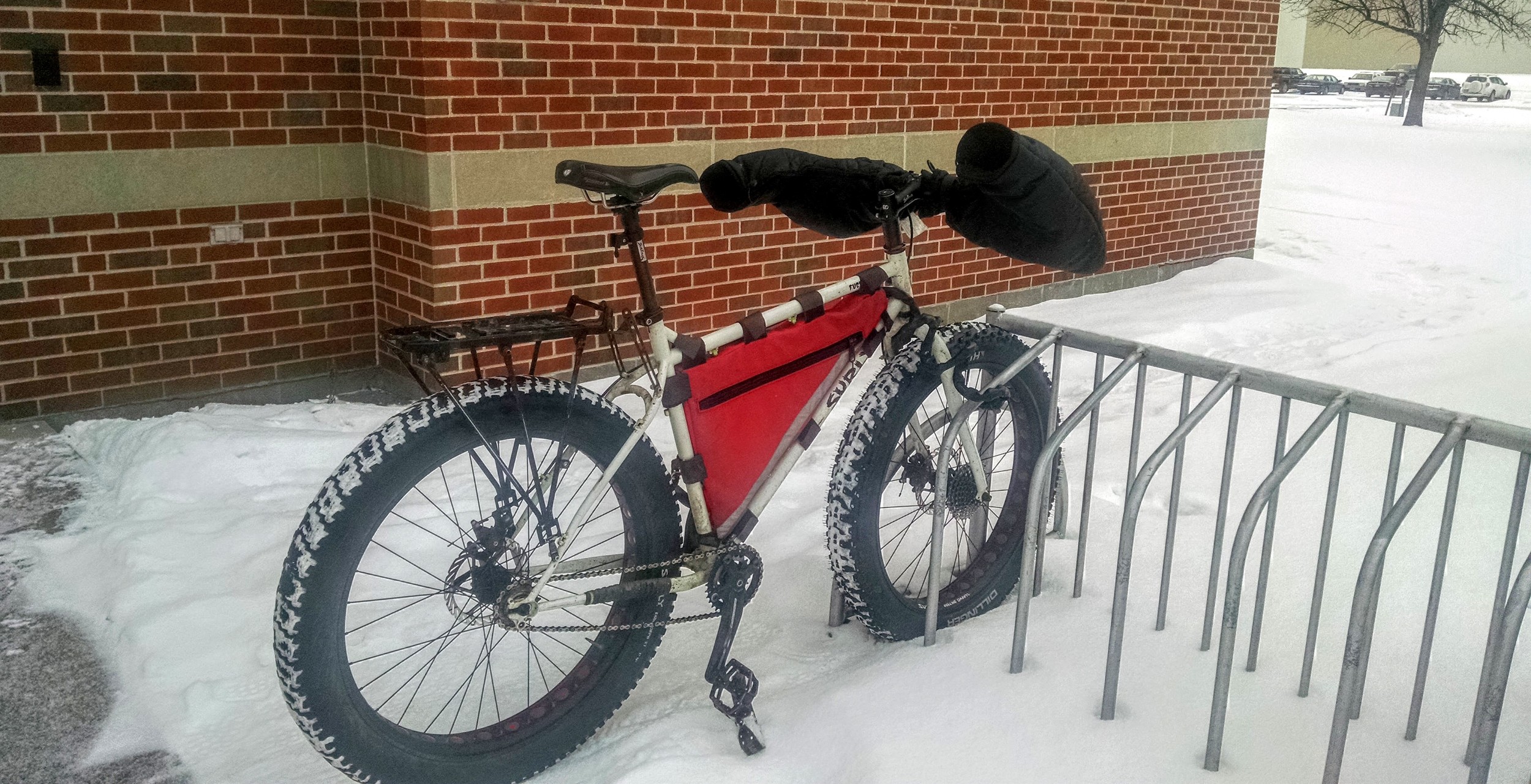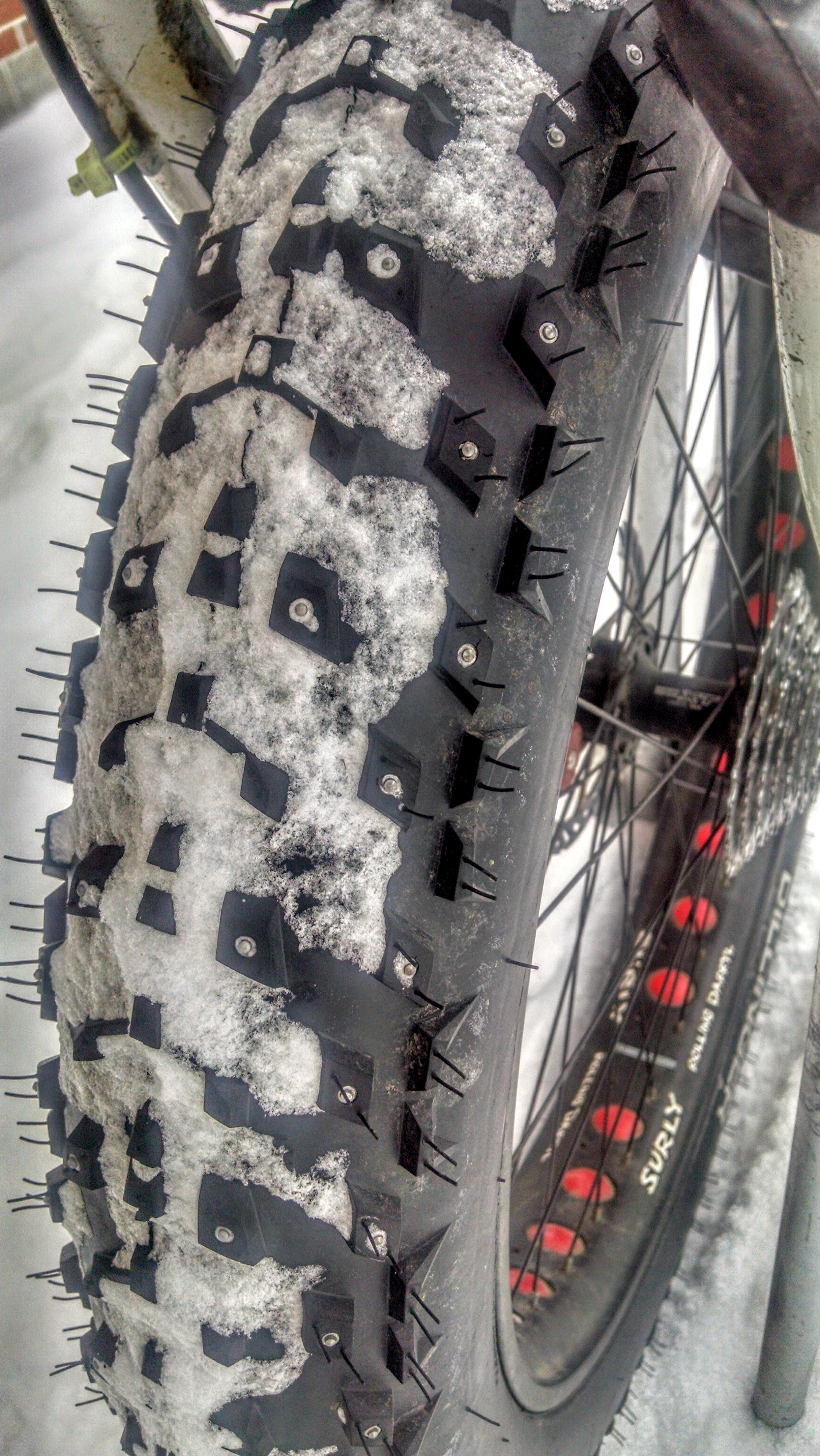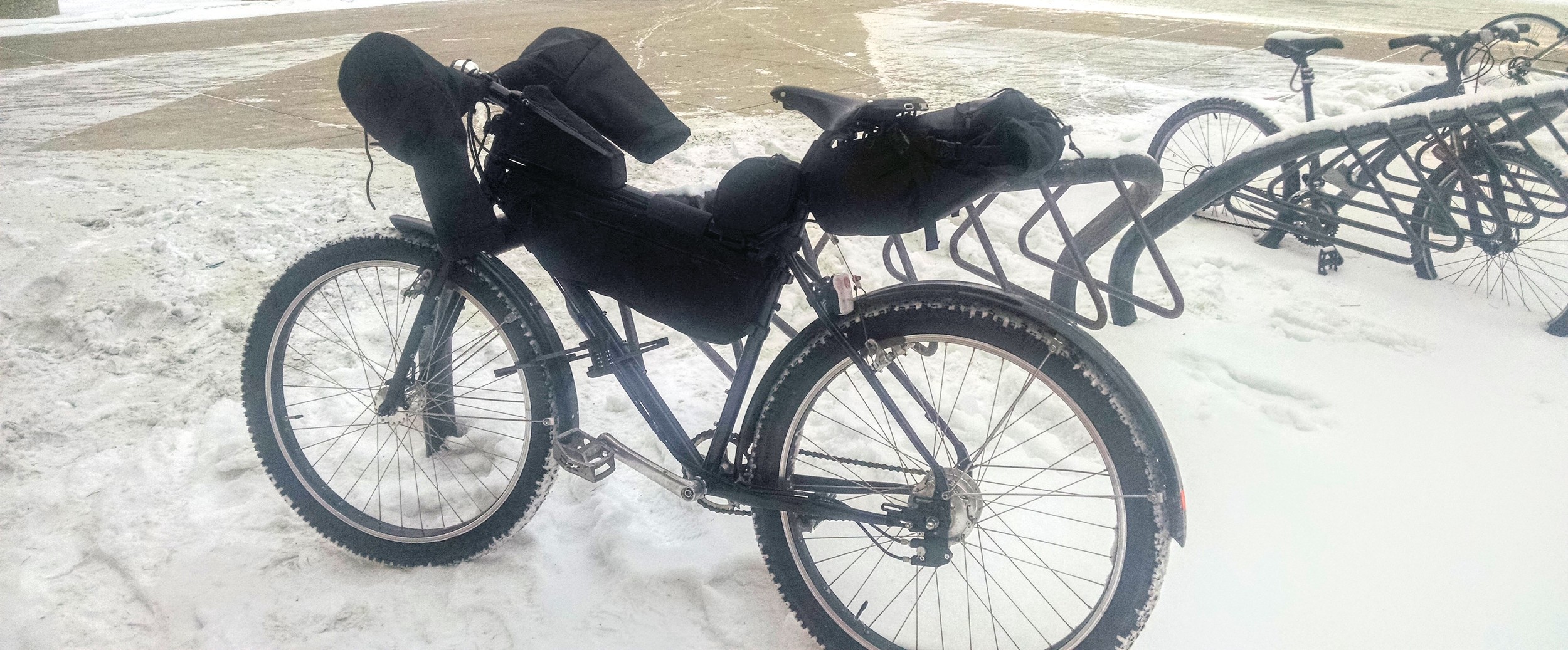Winter Biking is Hot
If you live in a northern climate and have advocated for more bike infrastructure in your city you have probably been told that the investments aren’t worthwhile because people don’t bike in the winter.
I happen to be a person and I also happen to bike in the winter. I’ve been doing it for over 10 years and love it. While certainly not for everyone, a growing number of people in winter cities are bike commuting year-round. Improved gear and equipment are making it easier. Increased investments in bicycle infrastructure will further lower the barriers to entry.
Winter biking might seem crazy at first blush. As I write this, the temperature is in the single digits (Fahrenheit) and it’s snowing. However, it’s not nearly as difficult (or cold) as one might expect. I spoke with some friends of mine who are experienced winter bike commuters for additional input. Here are four tips and suggestions:
1. Ease into it
Winter cycling is not an all-or-nothing proposition. Many people start gradually. Here are a few tips from REI:
- Use public transportation in your town and combine it with a bike ride.
- Drive halfway to work, park and then ride your bike the rest of the way.
- Bike every other day or every third day.
2. Outfit Your Bike
The low-budget approach to winter riding
You need to have the right tool for the job. Winter biking does present some challenges that your summer setup likely isn’t suited for.But, that doesn’t mean you need to go out and spend $2,000 on a brand new fat bike either. A regular bike can be modified for winter use.
This is my winter commuter bike. It is an old base model mountain bike that my friend Dave found abandoned on his porch. I invested in studded tires, had the bike shop put on a special winter grease for cold temps and added fenders to keep sand and salt from the streets off of me. It's not pretty or flashy, but it does the job.
Studded tires are the key for me. They not only provide extra grip, but also extra piece of mind. They run around $50 apiece but will last several seasons. Mine are over six years old and still work well.
Fat tire bikes are another option and one that is increasing in popularity. Fat bikes are a ton of fun as they can be taken off road. They can also make good commuters. The wider surface area allows for some stability over ice along with the the ability to go through snow. For added safety, a fat bike can be outfitted with studded tires. The pictures below are of my friend Matt's bike. He added a studded tire on the front.
My friend Joe takes a hybrid approach for his 6-mile commute to work. He switched from a standard frame with studded tires to a Surly Troll which allows for 2.7” wide tires. These are wider than a standard bike tire, but not as wide as a fat bike tire. Joe runs the pressure low to provide extra grip.
If you’re not dealing with a lot of snow, a skinnier tire can actually work really well as it will cut through the thin layer of snow and slush down to the pavement.
The point is, while you don’t necessarily need to drop a ton of money on a bike, you do want to put some thought into finding a setup that works. And, as you can see, there are a variety of options.
3. Wear the Right Gear
"There’s no such thing as bad weather - just bad gear.” That’s from one of our members, Alex Pline, commenting on a story about walking in the winter. I couldn’t agree more.
But here again, one doesn’t have to spend a ton of money on some highly technical gear. Nor do you have to dress like you’re going out on an Arctic expedition. The key is layering.
Start with a base layer to stay dry. I’m a huge fan of merino wool. A synthetic wicking fiber (such as polyester or nylon/spandex) works as well. You may add another layer such as a fleece for extra warmth. Then, an outer layer shell to provide some wind and water resistance.
A common mistake is to overdress. Bear in mind that your body produces a lot of heat while riding. My friend, Aaron, commutes 4.4 miles to work and has the following advice: “You should feel a little cold when you leave the house. By the time you get to your destination, you’ll be warm, but not too sweaty."
Here in North Dakota we get some wicked winds. Ski goggles and a face mask help a lot. I recently did an 8 mile ride on a day when the temp was -7F. The combination of a face mask and goggles kept me nice and toasty. In fact, the big issue I had on that ride was that I overdressed and ended up getting too warm.
Some additional tricks for keeping your hands and feet warm:
- Layer your socks. A synthetic liner sock with a thicker wool sock over does the trick for me. Avoid cotton. If it gets wet, you’ll be cold.
- Get a pair of liner gloves. Same approach here as with the socks.
Another trick for keeping your hands warm are bar mitts. These fit over the handlebars offering some warmth as well as wind resistance. For a cheaper alternative, Aaron suggests ATV bar mitts.
Bar mits keep Matt's hands warm during his 3-mile commute to work.
4. Prioritize Safety
Finally, some important safety considerations.
- Allow extra time and travel at a reduced speed.
- Lights! Don’t skimp on this. The days are shorter and you’re likely to spend more time riding in the dark.
- Helmet. Your risk of falling is increased in the winter due to icy conditions making a helmet all the more important.
- Backup gear: Have a bag with extra gloves and layers in case of a breakdown which could leave you out in the elements longer than anticipated.
While I certainly understand that commuting by bicycle in the winter is simply untenable for a lot of people, there may be some of you who have toyed with the idea. I hope these suggestions and tips have helped demystify it. After all, more people biking year-round only strengthens an already strong case for investing in bicycle infrastructure.





